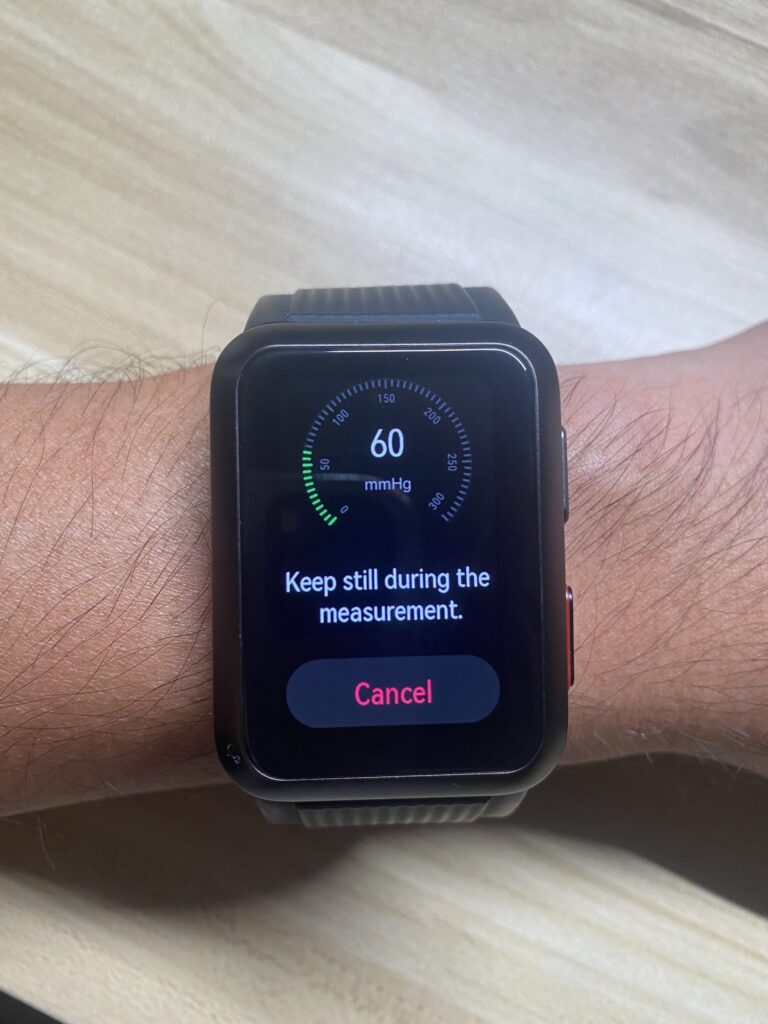What is it?
Huawei has just released its Huawei Watch D which brings medical-grade blood pressure measurement to the smartwatch fold.
How does it look?
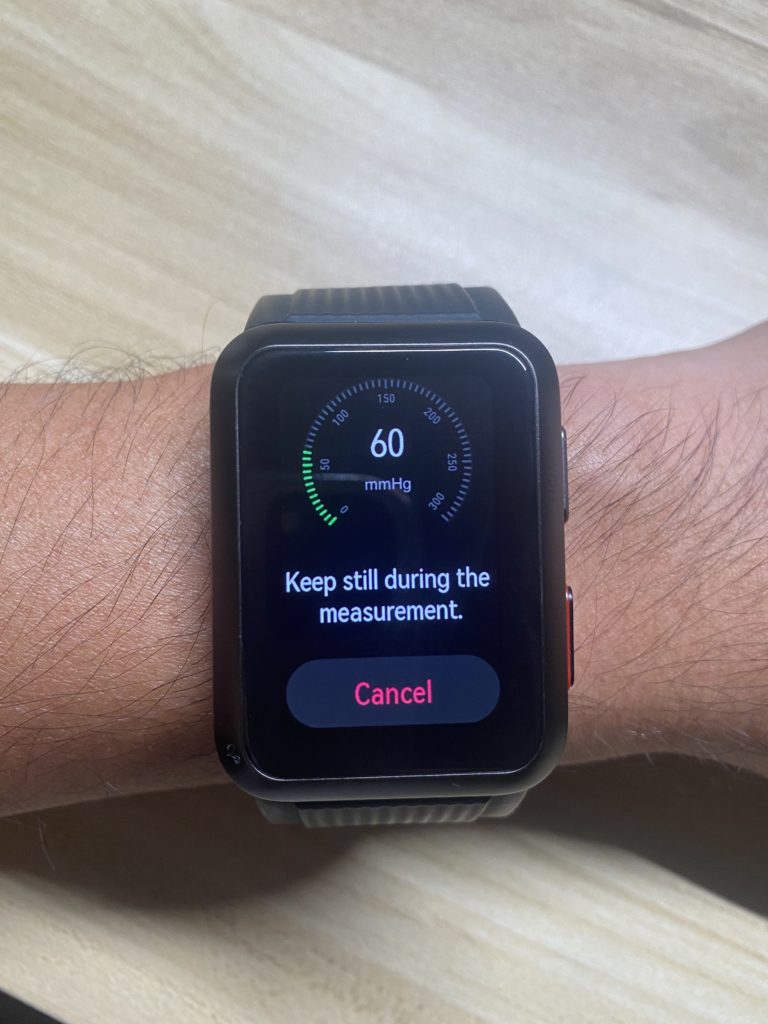
My initial reaction of seeing the Huawei Watch D for the first time was more of astonishment. Yes it’s bigger than the usual smartwatch and is almost in the same heft as those smartwatches for serious athletes. But that’s it, isn’t it? How on earth were they able to fit a medical grade blood pressure monitor in this thing?
For sure you’ve had your blood pressure taken by a doctor and might be familiar with either the manual or electronic blood pressure monitor. I’ll dispense with the obvious difference and its medical term but each one of them would have a sleeve with a gauge, a pump and a hose that connects the pump. Suffice to say that neither one of them would fit in your trouser’s back pockets. Yet, the Huawei Watch D claims to have all these and more.
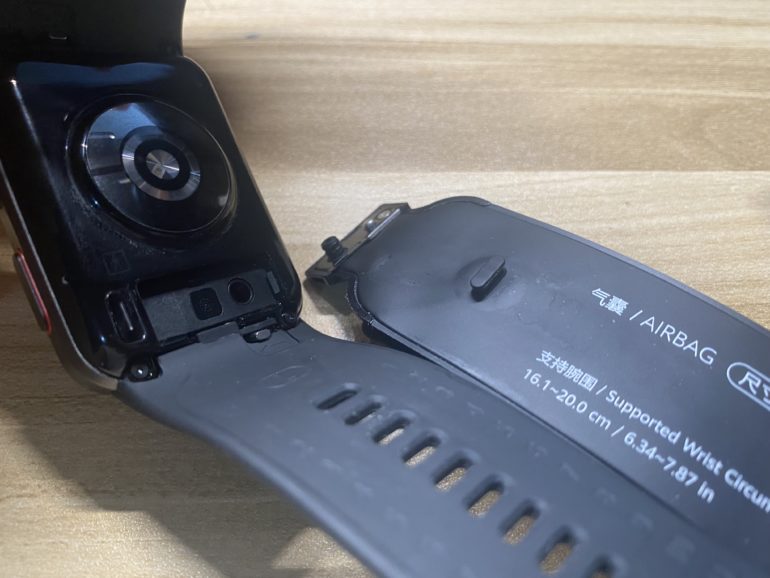
So it must be a really huge watch.
I’ve mentioned the Huawei Watch D is thick all over. But how thick? The official dimensions listed are 51 x 38 x 13.6mm with a disclaimer that the 13.6mm is the measured at its thinnest point which excludes the sensor area. I wouldn’t lose sleep over the additional 1mm or less of the sensor area but pushing it to 14mm is nothing to sneeze at either. 14mm is already akin to the thickness of two mobile phones stacked.
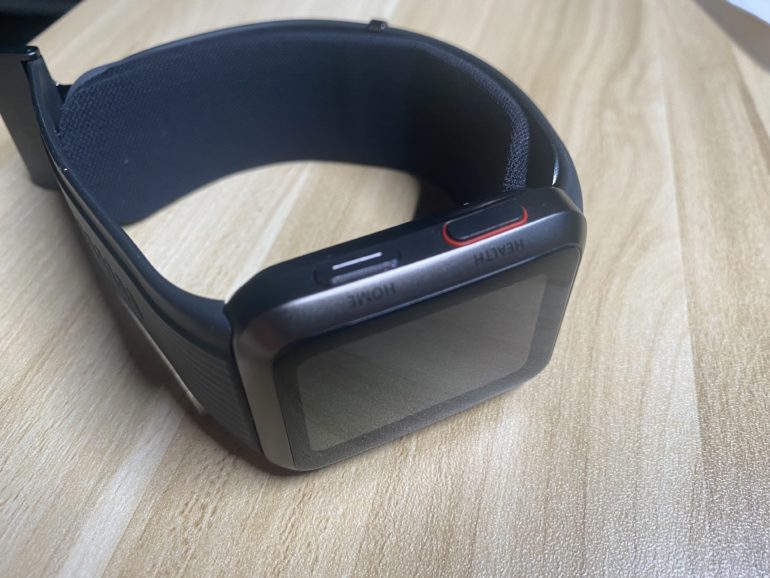
As for the watch face, I can see that Huawei tried to achieve balance here by not pushing the boundaries of the screen to the very edge. At 1.64 inches, the screen is as large as it can possibly get as any smartwatch can go. Any bigger, then it risks being too in your face. To contain the dominance of the display, Huawei Watch D opted to go with chamfered bezels. A great touch, I should say, since it blends well with how the strap is connected to the watch. One side of the watch has two oval hardware buttons, Home and Health, having a very tactile bump when pressed.
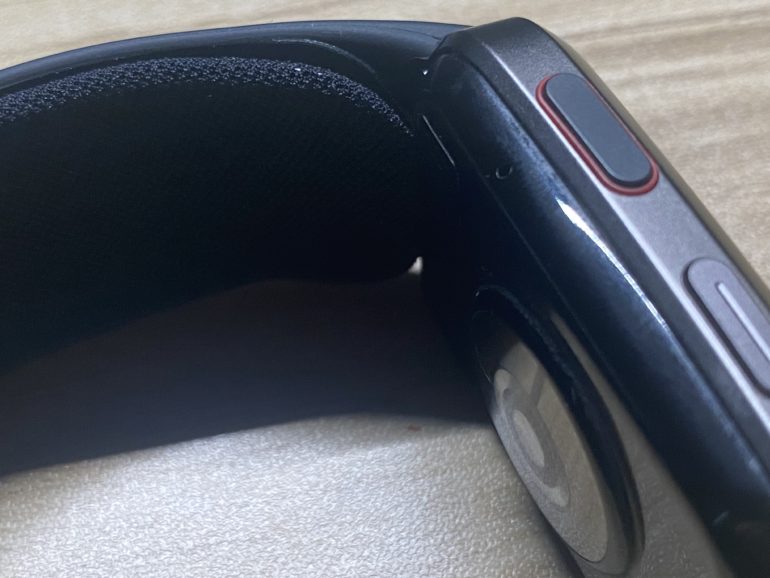
On the reverse side, we can see that the watch case isn’t all aluminum. About 30% of the thickness of the watch is made of hard plastic. Huawei almost pulled a fast one here since it’s barely noticeable when worn as the chamfered edge to the reverse side creates the illusion of continuity of the aluminum housing. It’s possible that Huawei chose plastic to cut weight to maintain 40.9g – which is just 2 to 3g heavier than most aluminum smartwatches.
Surely the strap must be thick.
Okay, now let’s go to where the Huawei Watch D separates itself from its ilk. The strap.
For most smartwatches, the strap isn’t worth the amount of ink as the watch does for obvious reasons but for the Huawei Watch D, we’re going to dedicate a bit of it here. The Huawei Watch D features a black fluoroelastomer strap. The material is, I would say, the preferred material for fitness bands and watches since, in my experience, they don’t attract lint and don’t absorb smell. Others say they are far more durable and retain their form (more on this later) as compared to silicone or rubber which is why the more premium smartwatches use them.
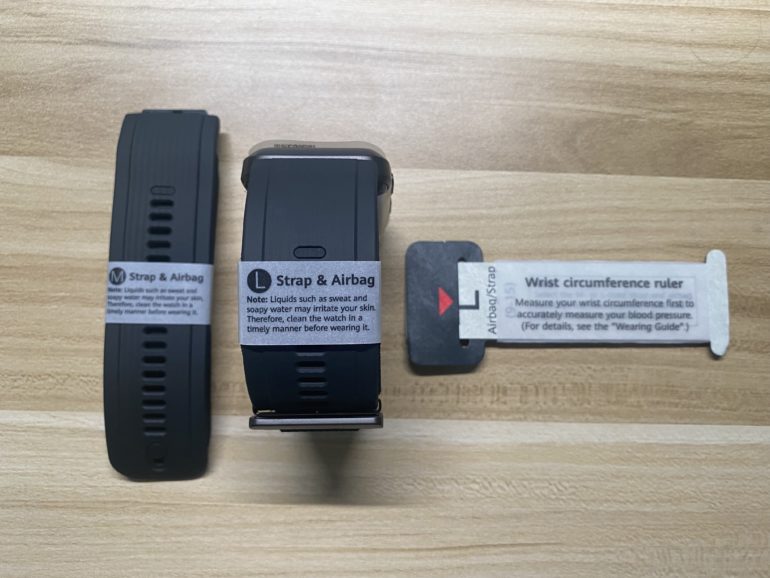
Ever saw a luxury watch with a metal clasp that you only need to adjust the first time? The Huawei Watch D features the same type of sandwich -like strap and a stainless-steel butterfly shaped buckle to ensure that the fit is consistent and adjustments are no longer necessary after the initial fitting. Just lock-it in and go.
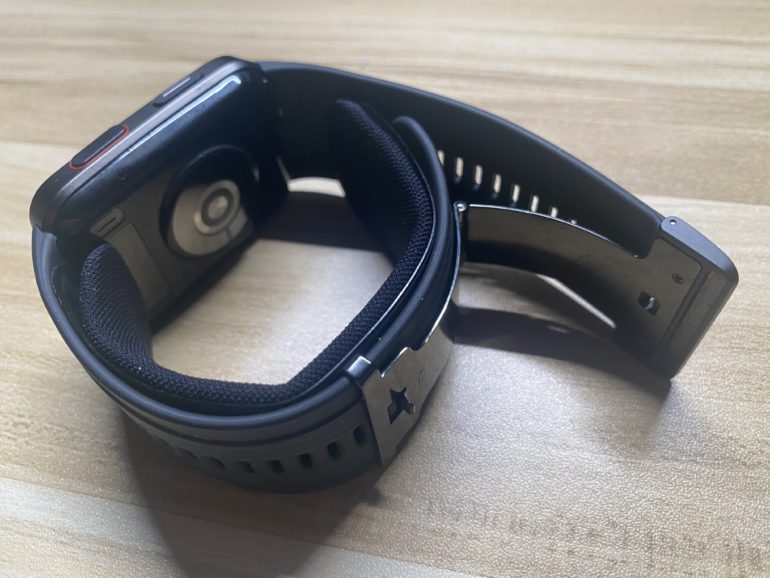
That’s not the all for the strap (told you we’d give it more ink). The inner side of the Huawei Watch D also comes with a double-layer narrow air bag. Huawei claims that when inflated, the said air bag tightens the strap which results in better compression and can now accurately measure changes in pulse pressure.
Those are Huawei’s claims. How about your experience using the blood pressure monitor?
Impressive to say the least. The Huawei Watch D is purported to have “medical grade blood pressure measurement”. So it means that it can take your blood pressure that’s just as reliable as the ones used in the medical field. Currently, I don’t have any cardiovascular issues that need constant blood pressure monitoring so I can’t compare it to any trended data in the past. However, I did have a chance to compare it with an electronic blood pressure monitor and the results are within the advertised +/-3mmHg pressure measurement error.
I had to also get used to how to position my arms correctly to get an accurate measurement. It can detect the slightest movement which can invalidate the measurement so yes, one has to be still and relaxed. At the press of the “Health” button on the side, the Huawei Watch D opens the blood pressure monitoring app. Press the “measure” button onscreen then out comes a short animation on how to position your arm at heart level and a reminder to keep still. When it measures, you will feel the increasing tightness of the watch on your wrist as the dime-sized pump in the watch fills the airbag. The tightness is, I should say, gives the same level of discomfort as a traditional blood pressure monitor gripping your upper arm. After a few seconds, the air bag is emptied and the watch resumes to the original fit. The screen then shows the results of systolic and diastolic blood pressure and your pulse. There are line bars on the screen to indicate if your blood pressure is within the green range (green) or if it recorded irregularities (orange and red).
In my time with the Huawei Watch D, it recorded “elevated” 4 times. A little concerning I might add but not to the level that I should call a cardiologist. What’s good about it is that it heightened my awareness for my heart and that continuous monitoring should be helpful to spot irregularities.
What else can it do?
The Huawei Watch D has all-day SPO2 monitoring, continuous heart rate monitoring, ECG, skin temperature detection, sleep monitoring and stress monitoring.
In my time with the watch, I unfortunately got hit with COVID and wasn’t able to test it rigorously for outdoor cycling. However, I found that it was also good to be wearing the Huawei Watch D since I could monitor my blood-oxygen level, stress level and yes, blood pressure. Quite happy to say that in the few days that I had symptoms, the watch did not flag me for any irregularities.
Since it is a smartwatch, this goes without saying that it does what a smartwatch does: notifications, alarms and activity tracking among others. What it doesn’t have is the ability to answer calls. It’s quite perplexing that the Huawei Watch D doesn’t have this since it does have a speaker and is IP68. Does adding a microphone add more heft? Who knows.
How about as a gym buddy?
You’d be happy to hear that the Huawei Watch D is great for working out. Yes, it’s a bit on the chunky side but I’ve boxed in it for about three times now and so far no issues. Well, there was one time where the mesh cover of the airbag came off (don’t freak out, it’s just the fabric cover) while I had the gloves on. It was probably my fault because I had adjusted the watch to be more loose so I can properly wrap the boxing gloves on my wrist. Still, it can take a lot of power punches in the heavy bag and rapid pounding on the speed bag.
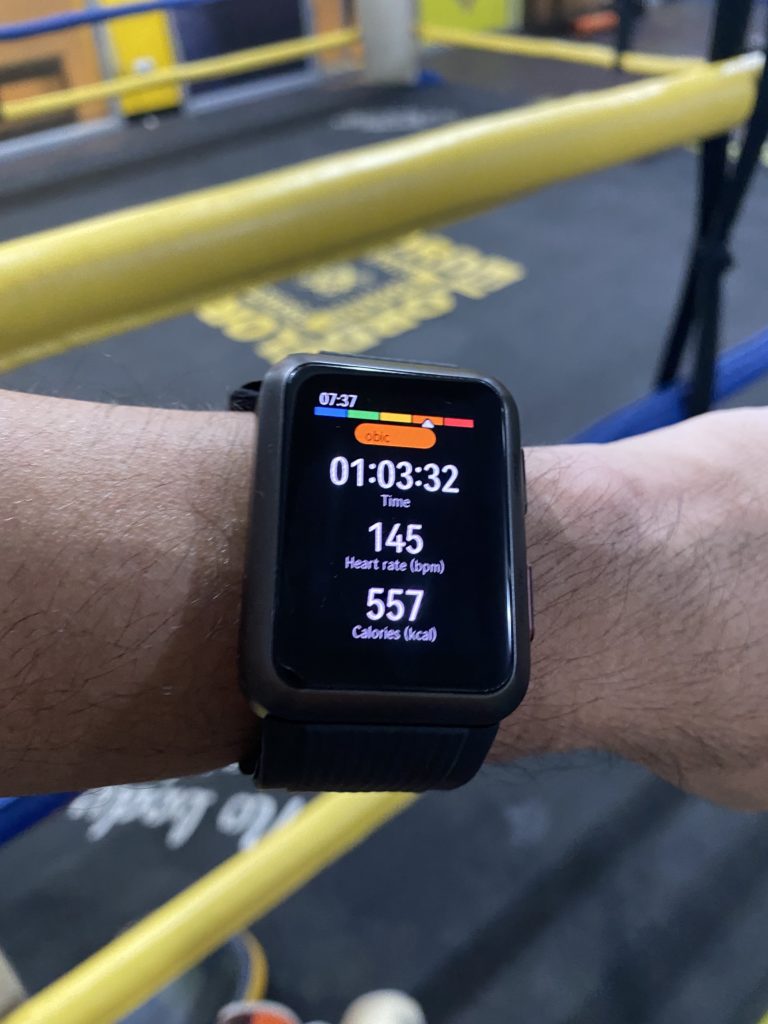
There are 70+ workout modes to choose from. However, there’s a glaring omission in the sports listed: swimming. It would’ve been awesome to include swimming and other water sports here, however its IP68 isn’t just up to task. Its probably because of the complicated blood pressure monitoring hardware. Imagine having to resist water getting in the internal pump. For that, I think we can get the omission of swimming a pass for now.
With all these under the hood, could it even last a day?
In my 2 weeks with the Huawei Watch D, I have to admit, I didn’t push it all the way down to zero and had to recharge it every 5 days. You might think that the battery goes down every time the blood pressure app is activated with the mini pump blowing hard to fill that very tight space in your wrist while the watch and its plethora of sensors kick in. You’d be pleased to know that it didn’t budge at all. Now I didn’t test how many times I should do the test before the battery level drops a percent (maybe I should, no?) but that would entail that I sit still for what might be an hour or so. Let’s just say with all these under the hood, the Huawei Watch D just sips from the battery and should be the last thing on your mind if you’re considering this smartwatch.
What’s the verdict then?
The Huawei Watch D is Huawei’s attempt at a medical grade smartwatch and it succeeds. Its amazing how the Huawei Watch D can house all the complicated and delicate hardware in a smartwatch without having to compromise on looks. Its price of P19,999 is just about right for a watch with medical grade features. The need for a blood pressure monitor in a watch might be considered niche by some, but for those who take their heart health seriously, don’t look further.
PROS:
Medical grade blood pressure monitor using mini airbags attached to the strap
Sandwich-like strap retains fit, fluoroelastomer ensures strap integrity is retained even after repeatedly inflating airbags within the strap.
Surprisingly long battery life despite having an internal pump
CONS:
Chunky. The thick watch might be off-putting to people with smaller wrists
Can’t take a call.
Allan Abaca is an avid gamer through and through. Virtually, he is locked-in with his PS4 almost daily and has just introduced the awesomeness of gaming to his two sons.
Next in his sights is PC gaming. The platform which he nows considering going back to after a two decade hiatus.
Oh, and let's not forget the Nintendo Switch...
His psn id is hip2b2

